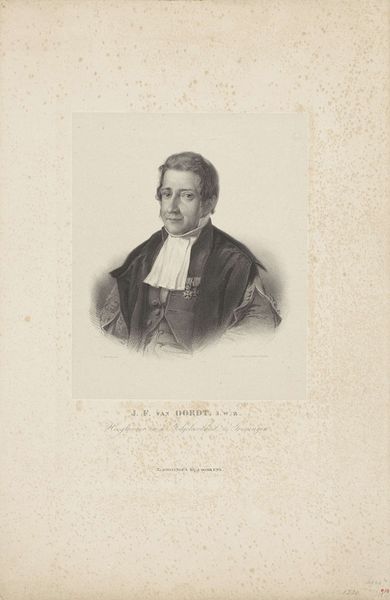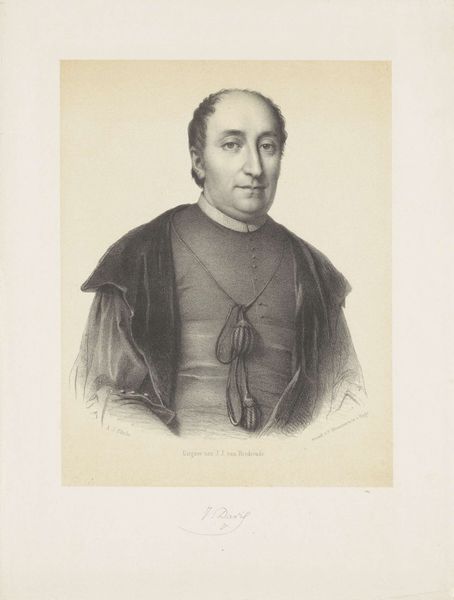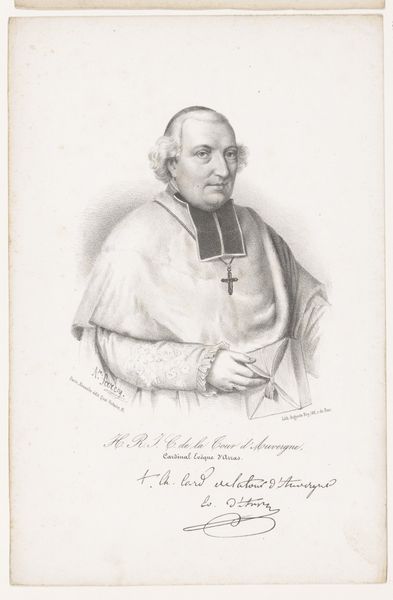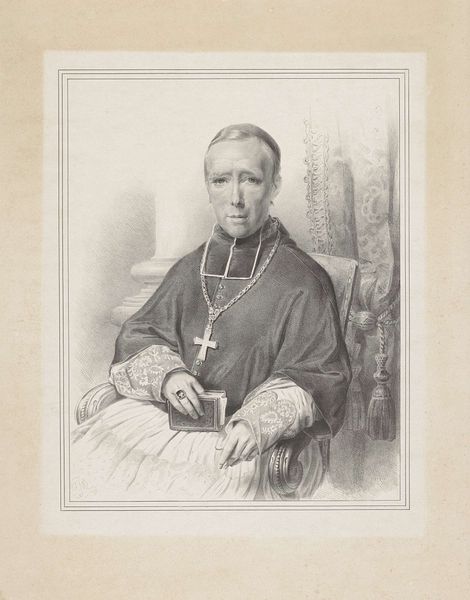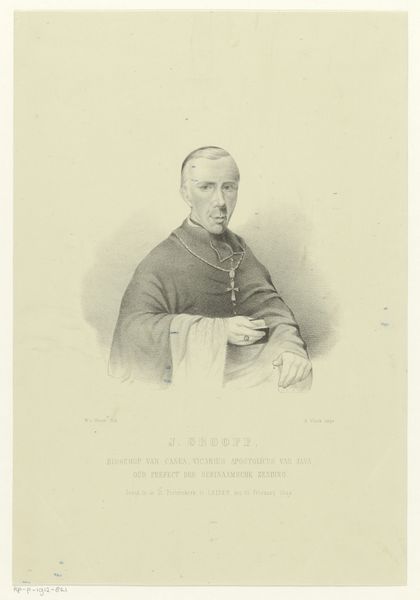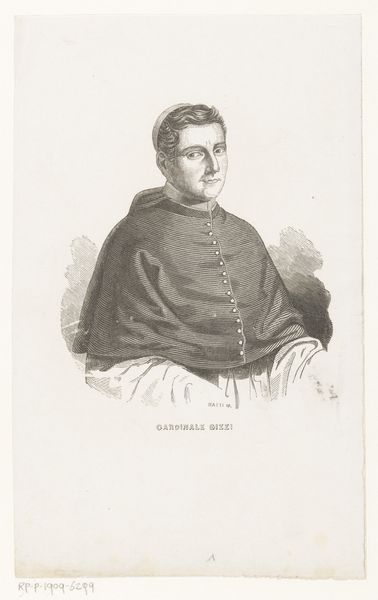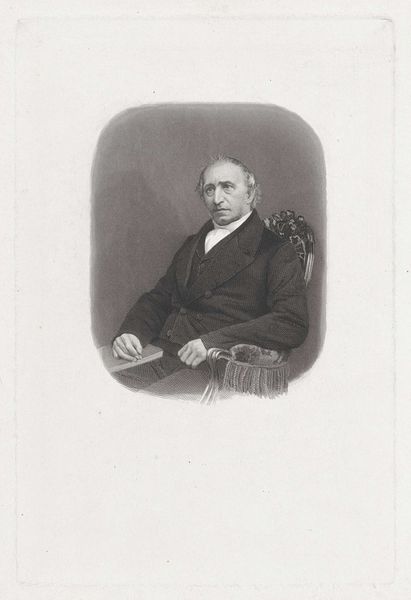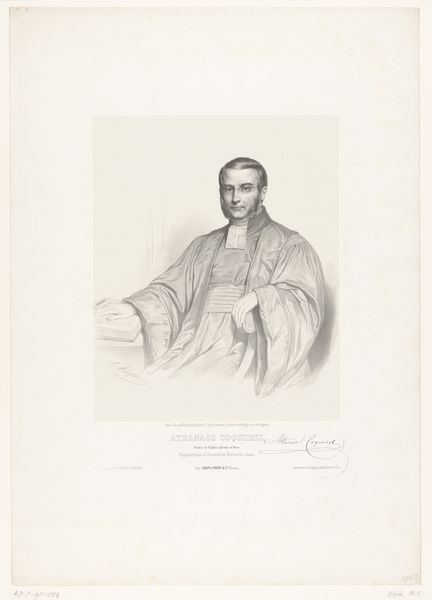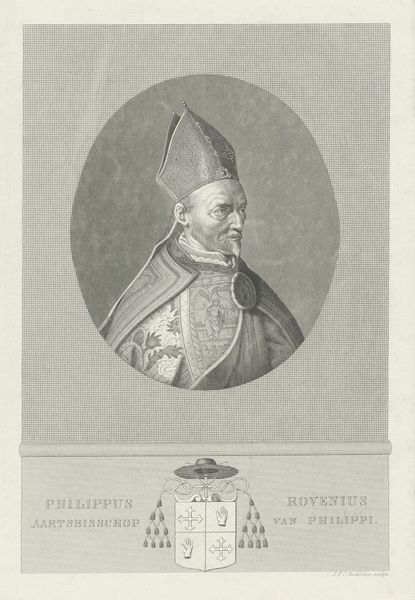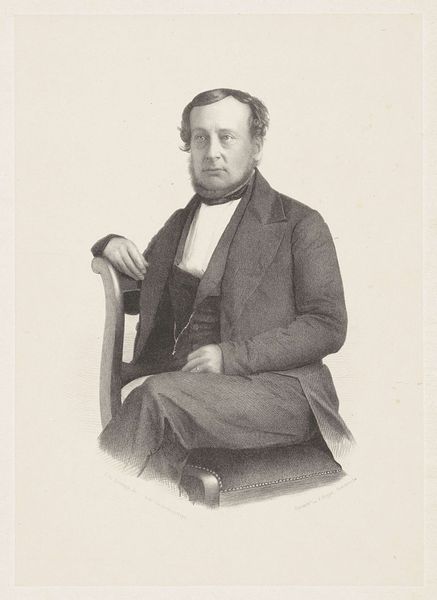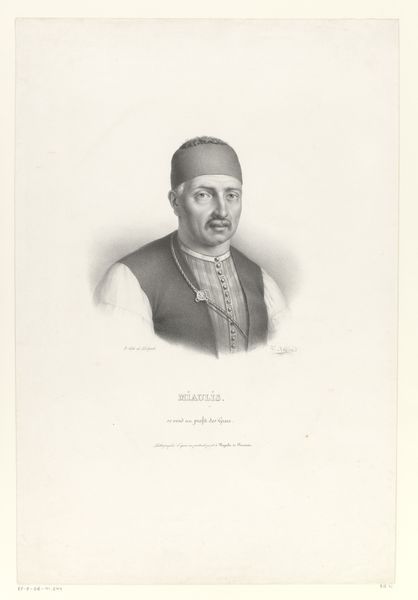
drawing, paper, ink
#
portrait
#
drawing
#
paper
#
ink
#
pencil drawing
#
history-painting
#
academic-art
Dimensions: height 145 mm, width 111 mm
Copyright: Rijks Museum: Open Domain
Editor: This is Frans Molenaar's "Portret van Jacobus Franciscus van Vree," a drawing made with ink on paper sometime between 1853 and 1878. I'm immediately struck by the formality of it, the subject’s intense gaze, and the clear markers of religious authority. What aspects of this portrait jump out to you? Curator: It's compelling how Molenaar situates van Vree. Consider the era – a period grappling with secularization, class conflict, and shifting power dynamics. The portrait serves not just as a likeness, but as a statement. The meticulously rendered religious garments, the direct gaze… They all communicate authority at a time when such authority was being challenged. How do you interpret van Vree’s role, positioned as he is between religious tradition and a rapidly modernizing world? Editor: That's interesting. I hadn't thought about the tension of the time. So, this portrait might be trying to reinforce a sense of stability and traditional power? Curator: Precisely. And look closer at the *style*: Academic Art was itself a language of power, steeped in tradition. Notice the detailed rendering, the careful attention to likeness. Who do you think this portrait was meant to serve? Was it for the Church? For the public? Or something else? Editor: Probably for the church or some other sort of official institution. It's not like he's trying to break any boundaries. Curator: Right. Considering the artwork as a cultural artifact, it tells us much more than just how van Vree looked. It offers a window into the social and political landscape of the 19th century, the struggles of identity and power, the challenges to tradition, and the visual rhetoric deployed to maintain a certain order. Editor: That definitely gives me a new perspective. It makes the portrait much more than just a historical record. Curator: Indeed. By understanding the portrait’s historical and social context, we begin to unpack the layers of meaning embedded within it. Editor: I will definitely remember this the next time I look at a portrait!
Comments
No comments
Be the first to comment and join the conversation on the ultimate creative platform.
